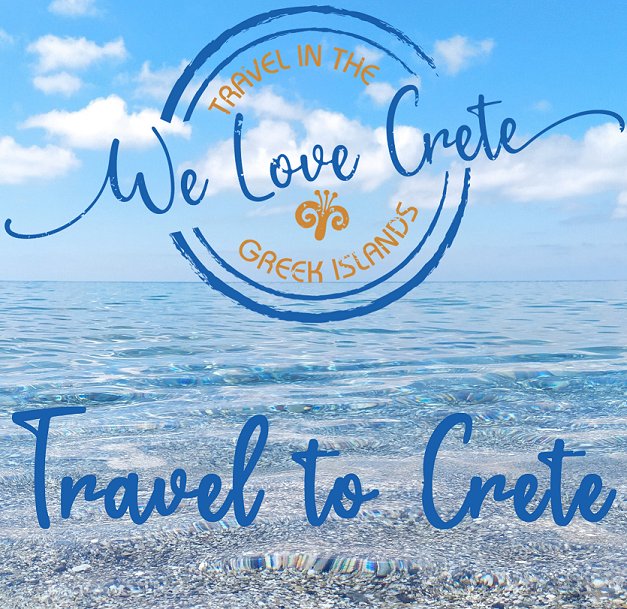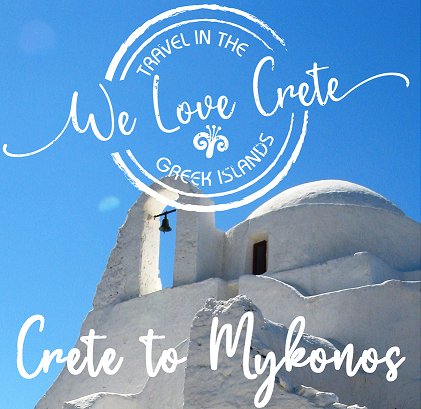- Home
- Cretan Mountains
- Crete Mountains
This page may contain affiliate links, see our disclaimer here.
Crete Mountains
By Katia Luz
Exploring the High Life
Crete Mountains - on this large island 260 x 60 km in the south of Greece, there are major mountain ranges and plenty of high country, rocky rough terrain and gorges to explore. Many of the mountain areas are inaccessible and difficult. Snow falls in winter and the mountains are cold and dangerous to pass.
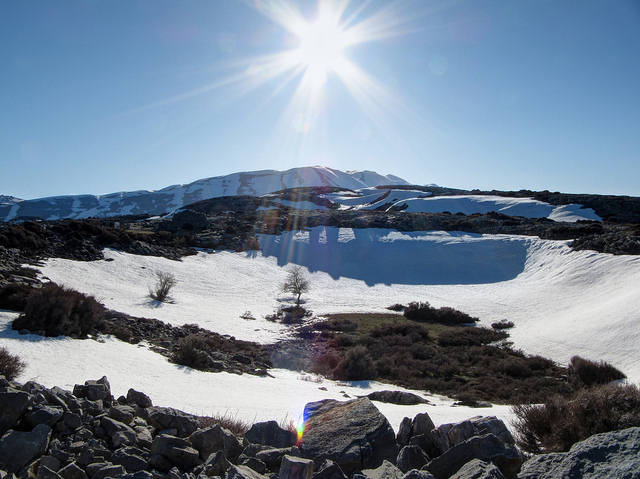 Psiloritis or Mt Ida - the highest mountain in Crete
Psiloritis or Mt Ida - the highest mountain in CreteThe mountainous regions from west to east are:
• The White Mountains
• The Idi Range
• Mount Kedros
• The Dikti Range
• Mount Thripti
The White Mountains or Lefka Ori are formidable mountains in the west of Crete. Due to lack of vegetation, they are a ‘high desert’ and gleam white because of the reflection of sun on the white rocky mountainsides. In winter they are covered in snow and present a stunning scenic backdrop to life in the western side of Crete.
Samaria Gorge National Park is located here, with the large north-south running gorge drawing walkers from all over the world.
Videos of the White Mountains
Dimos Chania video of Lefka Ori
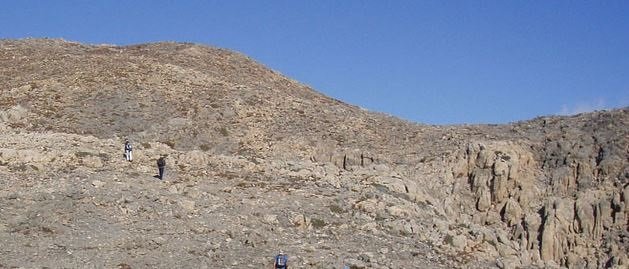 The 'High Desert'
The 'High Desert'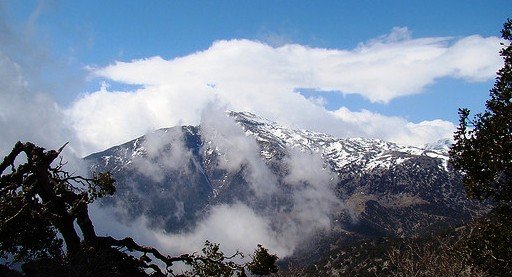
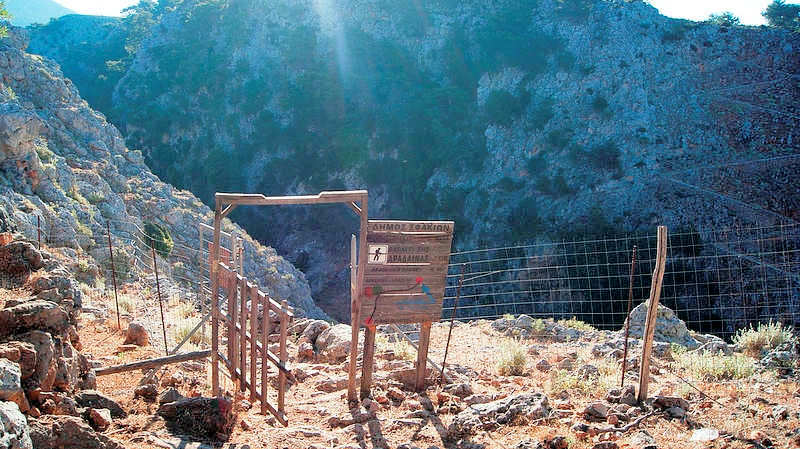
Above is the entrance to a steep rocky gorge in Sfakia, in the west of Crete. Many gorges make excellent walking, and can be walked from north to south, concluding on the inaccessible south coast of Crete.
See more about the Gorges of Crete here.
 Shepherds make these huts - mitata - from local stones using dry stone methods
Shepherds make these huts - mitata - from local stones using dry stone methodsCrete Mountains
In the central Crete mountains is the Nida Plateau in the Ida Range, in central Crete, which sits just below Mount Ida or Psiloritis (the tall one), the highest mountain in Crete. In these forbidding lands the shepherds construct small huts for shelter, made from the local rock, the huts are named mitata (see above).
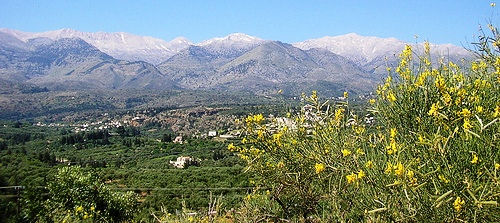
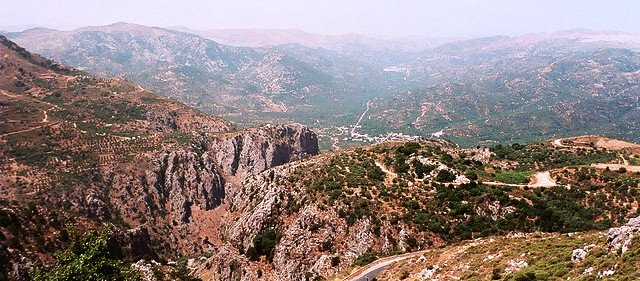
Above is the Lasithi Plateau as seen from the Dikti Mountains in the east of Crete. This lush plateau is perfect for sight-seeing, with caves, historical sites and good tavernas.
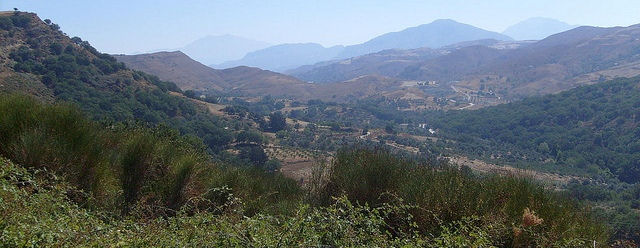
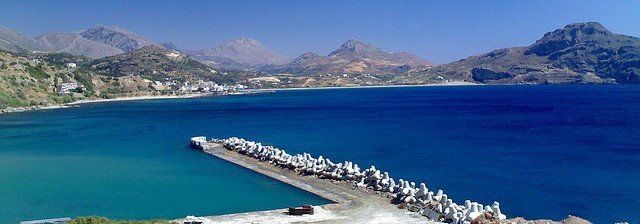
The sparkling Bay of Plakias in the south of Crete is ringed by mountains, the drive takes the visitor through wonderful scenery in the narrow gorge country, the rewards are crystal clear waters and this beautiful wide bay on the Libyan Sea.
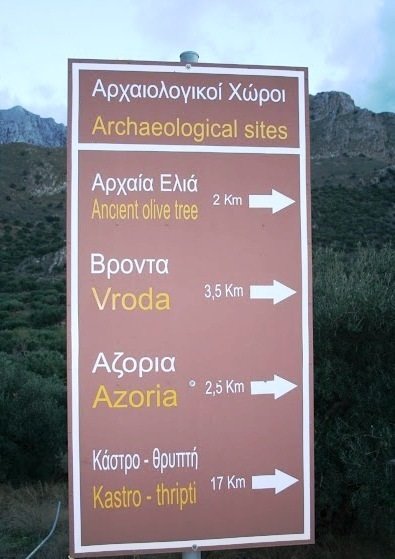
Near Thripti in Lasithi you can find walking trails with gorges, narrow mountain paths, rivers, an 3500-year-old olive tree now a living monument, a castle, many miles of tracks to follow and explore, with beautiful mountain flora to discover. Only 50 km from Agios Nikolaos in the east of Crete, Thripti Gorge and its mountains are virtually unknown and locals enjoy its diversity.
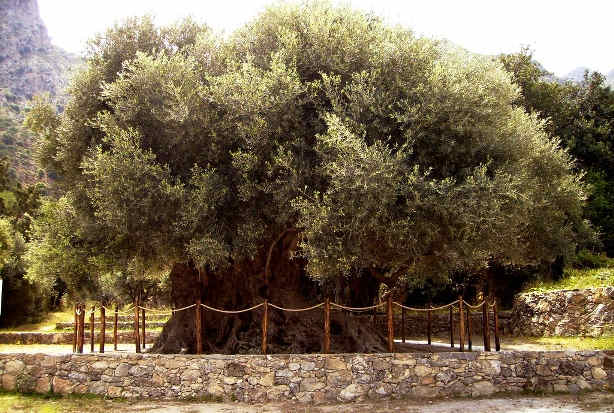
The Olive Tree of Azorias - this very old olive tree is located near the village of Kavoussi and the ancient site of Azorias in eastern Crete mountains, in Lasithi. This 3500-year-old tree is preserved as a national monument and leaves from it were used in ceremonies of the Greek Olympic Games in 2004. The diameter is said to be nearly 5 m.
Canyoning in Crete
In the mountains of Dikti in Lasithi and there are many places to go canyoning, and in loads of gorges all over Crete.
There are a couple of people you can contact, it would be best to contact them directly to ensure they are running a trip.
Giannis at Evergreen Tours
Manos at Canyoning Crete
See video on canyoning in Crete here:
Mountain Villages

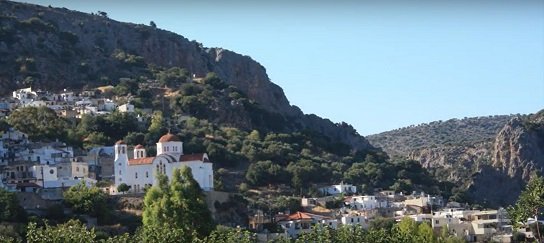
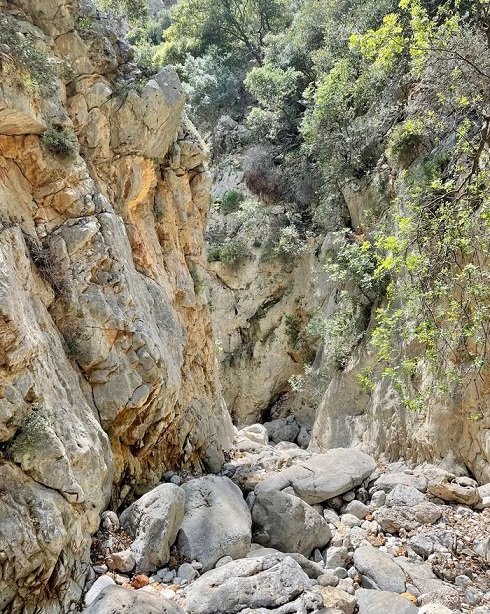
Many of the most fascinating villages in Crete are located high up in the tough country, where villagers have stories to tell, fresh goat's cheese to serve and a tradition of welcoming strangers.
In the foothills of the Psiloritis range you will find Zaros Village, with organic food at the taverna and mountain fish farms ready to serve fish caught just 2 metres away. Walk the Rouvas Gorge from here.
In Lasithi Plateau in the east of Crete is Tzermiado, where local fresh food is top of the menu, because many vegetables are grown locally. Walk the Dikti Mountains from here.
Also in the east is Kritsa village, known for its picture postcard architecture and great scenery, walk the Kritsa Gorge from here.
Mountain Flora of Crete
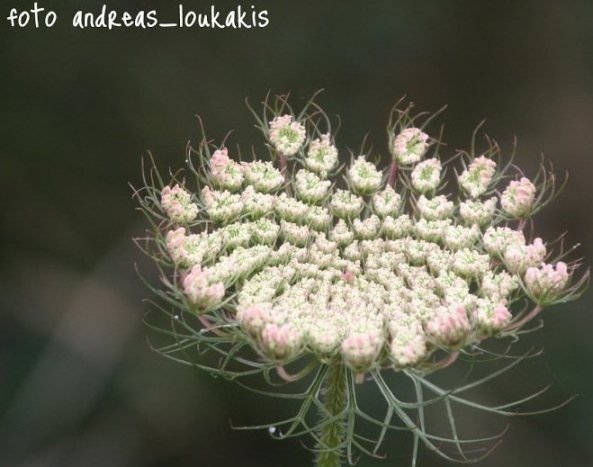
The endless variety of flora in Crete will stop you in your tracks as you hike in the Crete mountains and gorges. This is Daucus carota or Wild Carrot which is endemic to Crete.
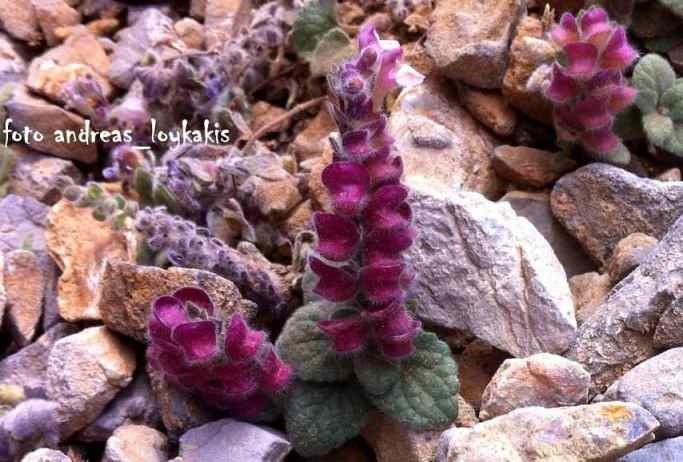
This is Scutellaria hirta, a small plant covered with velvety down which is also endemic to Crete and found in rock crevices, rubble and screes. Thanks to Andreas Loukakis of the walking club 'Pezoporia' for sharing his wonderful flora photos.
Mountain Accommodation
Crete Mountains - find your retreat in the high country here.
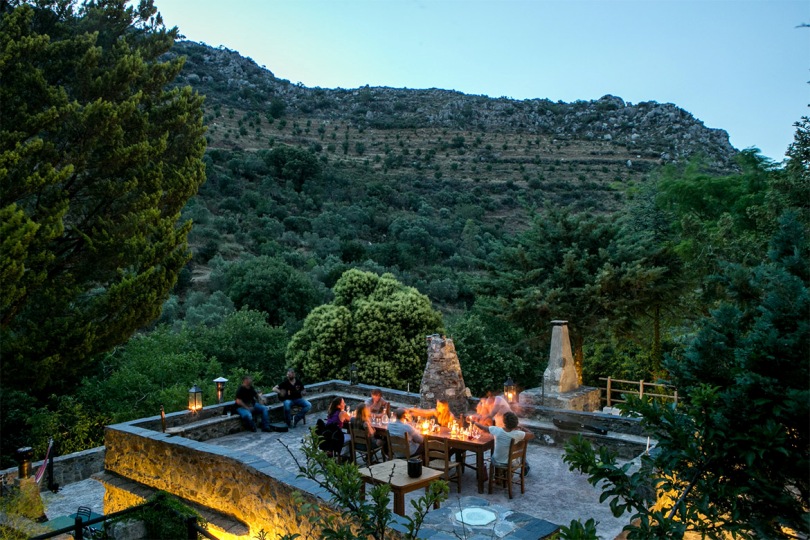
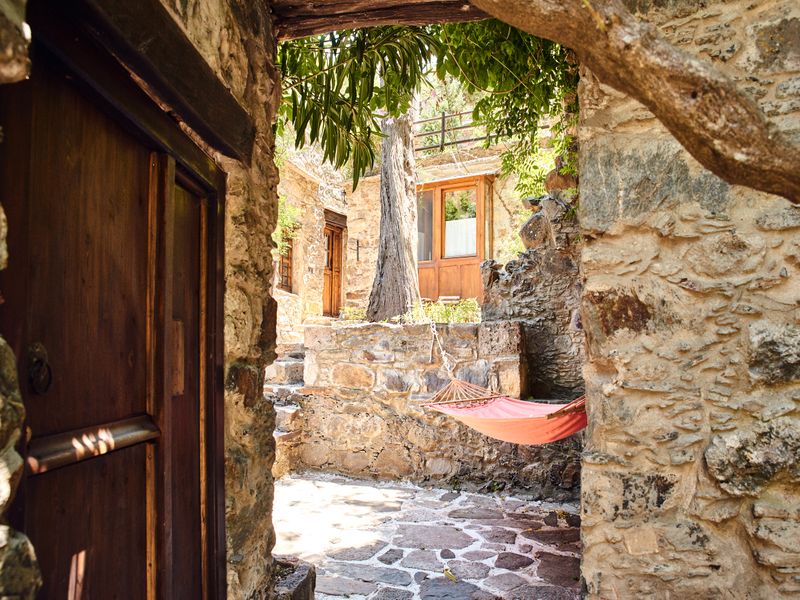
Milia Mountain Retreat in the mountains of Chania is an eco village nestled deep in the forests of western Crete.
This beautiful accommodation in Crete is chosen for its authentic architecture and small size, it is a peaceful rustic getaway for a real experience of Kríti. This community is also dedicated to sharing a real grass-roots environmental retreat, using organic farming and solar energy.
Located 60 km from Chania town in the west of the island, Miliá Μηλιά is a fully restored village built into the rocks of the beautiful Cretan mountains. The closest village is Vlatos 4km away.

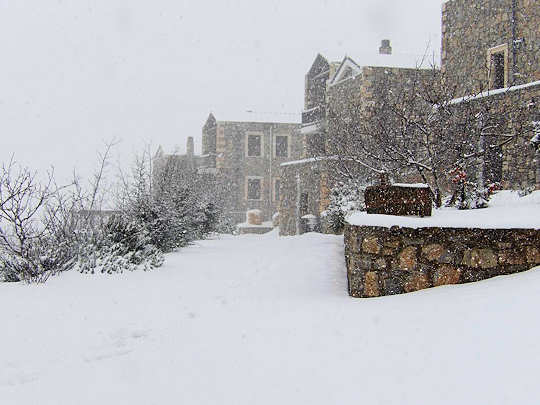
Arodamos Guesthouse is located on the plateau of Livadi close to Nida Plateau in the foothills of Psiloritis.
Visit in summer or winter for a completely rural escape. 20 km from Nida Plateau. Close to Anogeia Village. You will need a car to enjoy this accommodation.
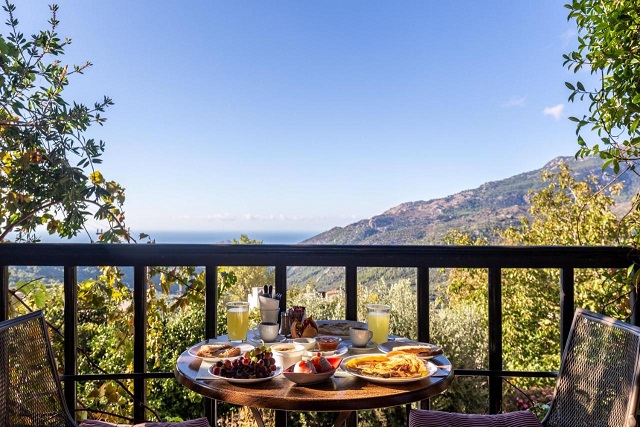
Sitting near the edge of the Selakano Forest, looking south over the sea, you will find a mountain hideaway at Mala Villa in the village of Males.
In the 5 deluxe suites you will have all comforts in abundance, in a stay full of surprises and romanticism, colours and aromas. Enjoy the luxury of your private residence with your private spa, relax amongst natural landscapes full of contrasts,
Visit Ierapetra town or Myrtos village on the coast. Taste local flavors and wines, making your stay in Mala Villa
an uplifting experience.
Getting Here
Take a 1 hour flight from Athens to Heraklion with Aegean Airlines or Olympic Air, with many flights available per day.
Or take a 9.5 hour overnight ferry from Pireaus port of Athens to Heraklion port.
More on flights and ferries below.
When you book with our car rental partners - Rental Centre Crete - you are supporting a local company with excellent service, competitive prices, transparent up-front prices and an easy online booking procedure. We are sure you will be well looked after by Harry and his team.

We trust you have enjoyed these tips from the We Love Crete team. Evíva!

Yiásas!
Anastasi, Apostoli & Katia
are the We Love Crete team
We just love sharing our passion for Crete, Greece and travel
About us Contact Us Kaló taxídi!
About the Team
Yiásas!
Anastasi, Apostoli & Katia
are the
We Love Crete team
We just love sharing our passion for Crete, Greece and travel
About us




